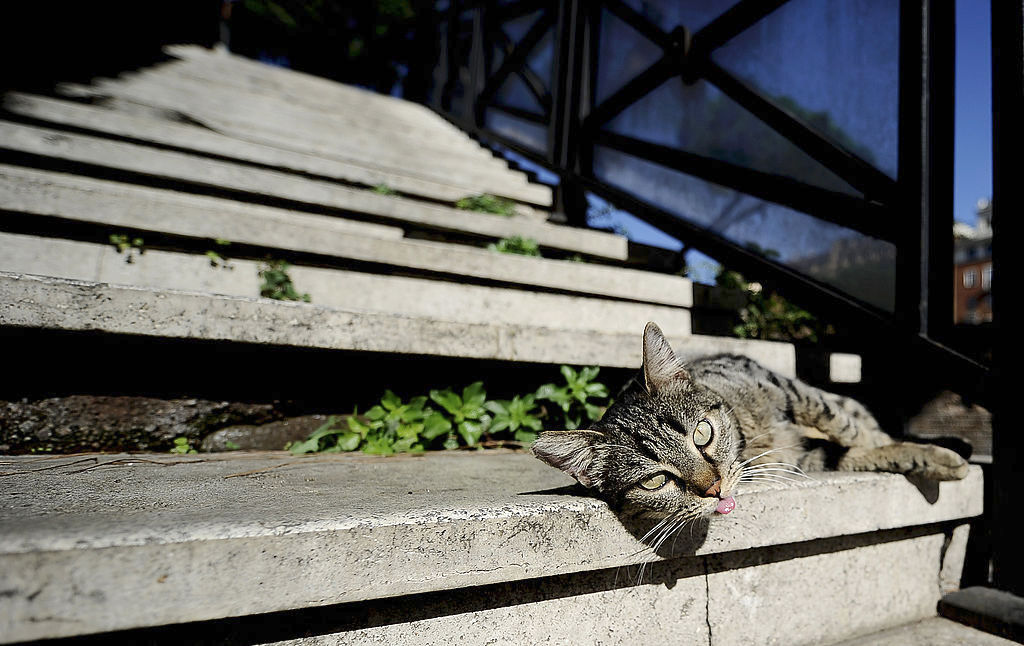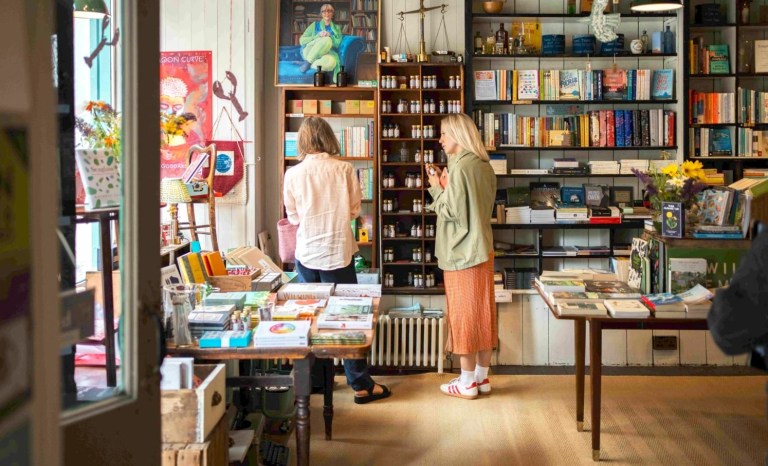The Area Sacra, or Sacred Area, of Largo di Torre Argentina is a world-famous archeological site in downtown Rome that’s been home to a community of feral cats for decades. Renowned for being the location where the Roman general and statesman Julius Caesar was assassinated during the Ides of March in 44 B.C., the ruins have only been wandered by their feline inhabitants, with visitors observing the historic spot (and sunbathing kitties) from the upper street level. But this past June, the ancient attraction reopened to human visitors for the first time in nearly a century.
When the area was excavated during the 1920s, four Republican victory-temples were revealed along with a portion of the portico of Pompey, per Atlas Obscura. Following the excavation, Rome’s feral cats moved in, and Torre Argentina has remained a refuge for a large stray cat colony, thanks to the efforts of some particularly determined volunteers. (Click here to meet some of the adorable cats.)

The Torre Argentina Cat Sanctuary has evolved over the years, thanks to the formidable “gattare,” or cat ladies, of Italy’s capital. The organization provides care for its sick or wounded feline residents, and runs a spay and neuter program to keep the feral population under control. Per the organization’s website, in 1993, an unnamed woman had been single-handedly feeding the cats and arranging for their spaying and neutering, when two of its founders, Silvia Viviani and her friend Lia Dequel, began to help. This would serve as the humble beginnings of the sanctuary.
According to Atlas Obscura, since the 1990s, the cat population at Torre Argentina has fluctuated from roughly 90 cats to a population peak of approximately 250. It’s estimated that the current colony counts 130 or so cats, many of which are disabled, sick, or have other special needs. Prior to the recent re-opening of the site to the public, crowds would routinely gather at street level to watch the cats among the ruins. A special closed-off area has been designated to care for the wounded and elderly cats of the colony.

The cat colony, beloved by tourists and the gattare alike, has also had its detractors. In 2012, Italian state archeologists, who believed the “illegal occupation” of the site by the shelter was risking the already-fragile state of the ancient monuments, insisted that the sanctuary be closed down, The New York Times reported in 2012. But the gattare stood their ground, claiming to have neutered and spayed nearly 29,000 cats in the span of 20 years, funded by roughly 10,000 benefactors. They argued that “without the shelter, Rome’s already overtaxed veterinary department” would be overrun by too many new strays. Accordingly, for several decades, various municipal administrations permitted the shelter to expand and modernize in spite of its unofficial status.

The gattare prevailed, and peace between the volunteers and the archeological experts seems to have come to pass. The site’s head archaeologist, Monica Ceci, acknowledged in a June interview with The New York Times that the cats had proven to be “good workmates” during recent construction.
As noted by Artnet News, in 2001, the city of Rome officially designated the cats at three different prominent sites (the Forum, the Coliseum, and Torre Argentina) to be protected as part of the city’s “bio-cultural heritage.” And now that the site is once again open to tourists, the sanctuary has been incorporated into the activities that tourists can partake in, by way of a $5.44 entrance fee.
The sanctuary’s underground office coordinates volunteer efforts, runs a gift shop, and facilitates the fostering and adoption of kittens and cats — the organization finds forever homes for approximately 125 cats per year, according to Hotels.com. For those who are unable to physically adopt, the organization encourages visitors — both near and far — to support the cats through the virtual “adoption at a distance program.” And as is befitting of any modern-day enterprise, the sanctuary even has its own Instagram account where you can meet even more of the furry faces that reside at Torre Argentina.
As noted by Artnet, the cats will now share the limelight and tourist attention with artifacts excavated from the site nearly a century earlier. But whether the ruins will inspire the same degree of love and devotion as the site’s much-adored felines remains to be seen.












